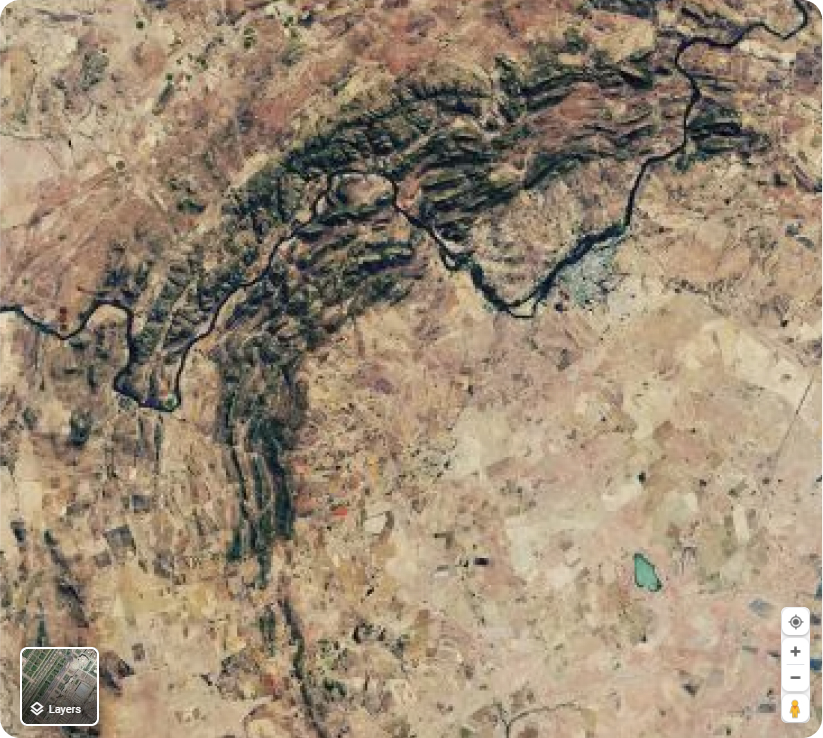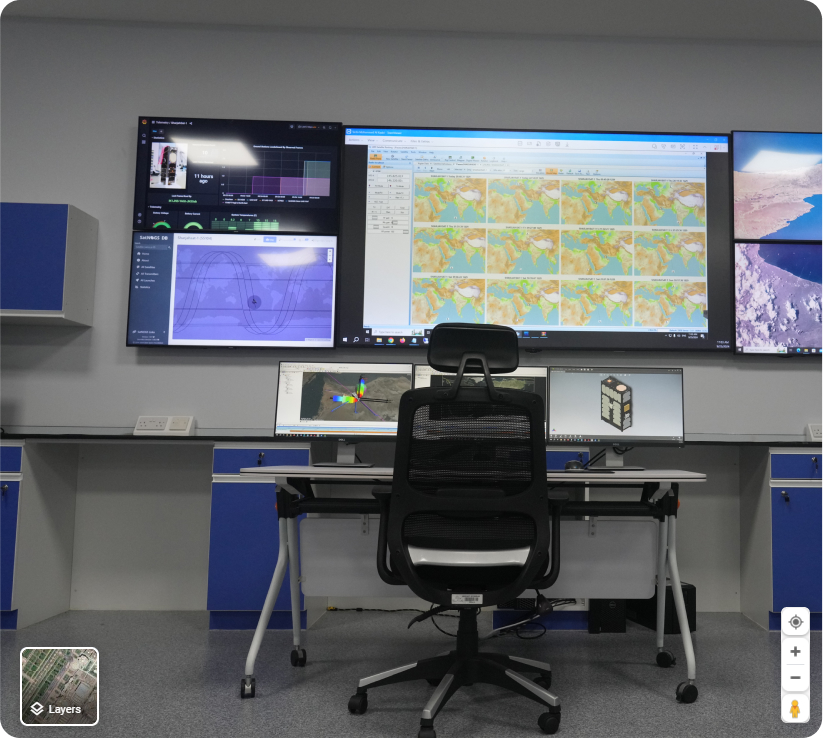
Mission Overview
Sharjah-Sat-1 is the first CubeSat mission developed by SAASST, aiming to build the capacities and expertise for future CubeSat missions. It is a 3U+ CubeSat deployed in low Earth orbit (LEO). The CubeSat consists of two primary payloads: an improved X-Ray detector (iXRD) and a dual camera system.
The design and development of the CubeSat platform are in collaboration with Istanbul Technical University-Space Systems Design and Testing Laboratory (ITU-SSDTL), while the development of the iXRD is managed by Sabanci University High Energy Physics Laboratory (SU-HEULAB).
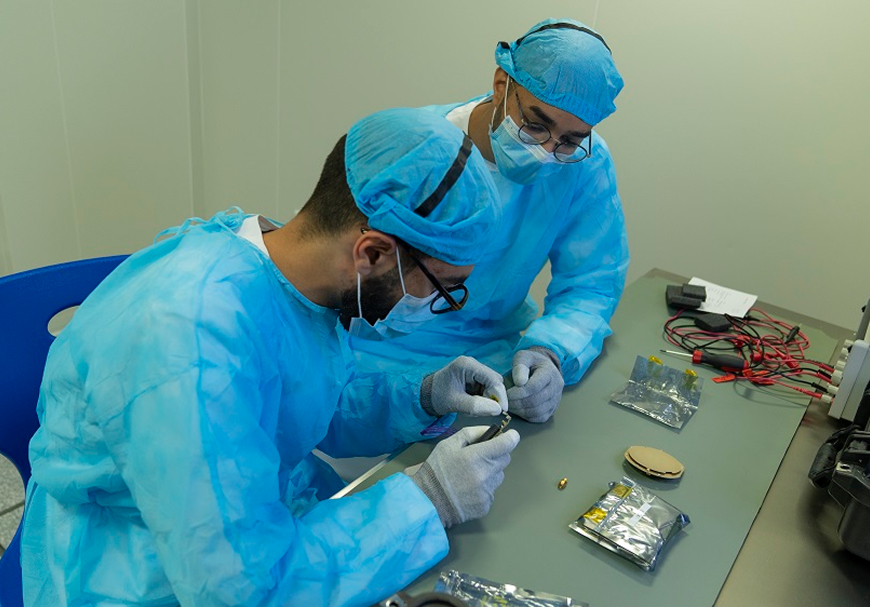
Mission Objectives
- To study bright, hard X-ray sources in our Galaxy and solar coronal holes.
- To capture images for the UAE and the Emirate of Sharjah.

A Look at the Core Components
Sharjah-Sat-1 includes the main subsystems typical of most CubeSats, designed to ensure successful space operations. These key subsystems are:
- Structure: The CubeSat has a 3U+ structure, providing a compact yet robust platform to support all the satellite’s components. The primary purpose of the structure is to ensure stability and maintain the satellite’s integrity during both the launch phase and its entire operational mission in space.
- Electrical Power System (EPS): Solar panels generate energy, which is stored in batteries to power the satellite during eclipses.
- Communication System: UHF/VHF antennas handle telemetry, tracking, and command (TT&C) communication, while an S-band system is used for high-data-rate transmission of payload data, ensuring efficient downlink of scientific information.
- Attitude Determination and Control System (ADCS): With reaction wheels and magnetorquers, this system stabilizes and orients the satellite to maintain accurate pointing for data collection.

- Command and Data Handling (CDH): This system manages the satellite’s internal operations and facilitates communication between subsystems and the ground station.
- Payload: The satellite is equipped with an improved X-ray detector (iXRD) and a dual camera system, designed for scientific research and Earth observation.
- These subsystems work together to allow Sharjah-Sat-1 to fulfil its mission of studying X-ray emissions from galactic sources and capturing images of Earth.
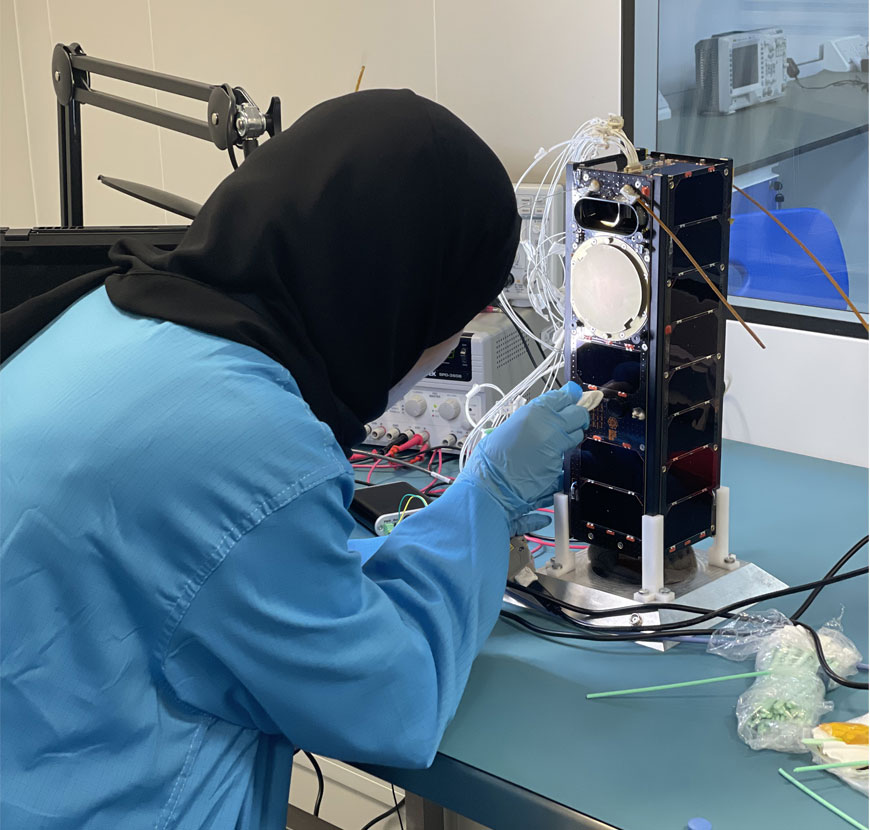
Mission Highlights
Final Testing
Before Sharjah-Sat-1’s successful launch, the satellite underwent its final testing phase at the SAASST CubeSat laboratory. During this time, His Highness Sheikh Sultan bin Ahmed Al Qasimi, Deputy Ruler of Sharjah and President of the University of Sharjah, visited the lab to inspect the progress. His Highness was given a detailed overview of the testing processes and the satellite’s readiness for deployment. The CubeSat was shipped shortly after the visit for integration into the SpaceX Falcon 9 rocket, marking a major milestone for the team.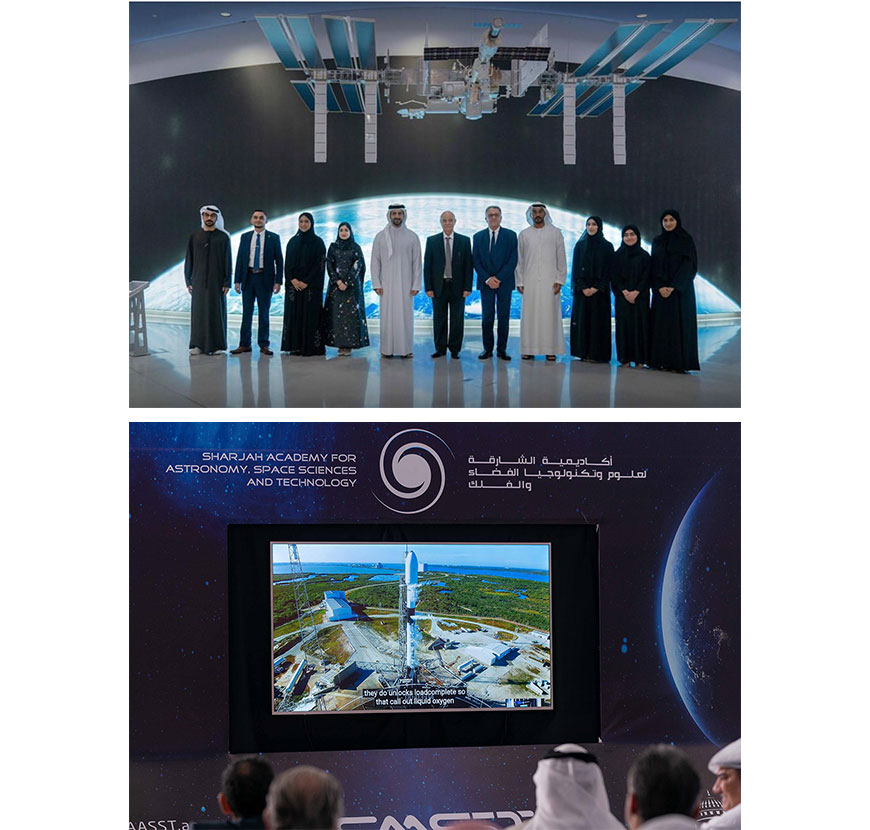
Successful Launch!
Sharjah-Sat-1 was finally launched on Jan. 03, 2023, onboard Falcon 9, Transporter 6.
The Falcon 9 lifted off on the Transporter-6 dedicated smallsat rideshare mission at 6:56 p.m. UAE Time from Cape Canaveral’s Space Launch Complex 40. The rocket’s first stage, making its 15th flight, landed back at Cape’s Landing Zone 1 eight and a half minutes after liftoff.
Two ION vehicles from D-Orbit were onboard the launch vehicle. Sharjah-Sat-1 was loaded on ION 1 vehicle that was later deployed on Jan. 16.
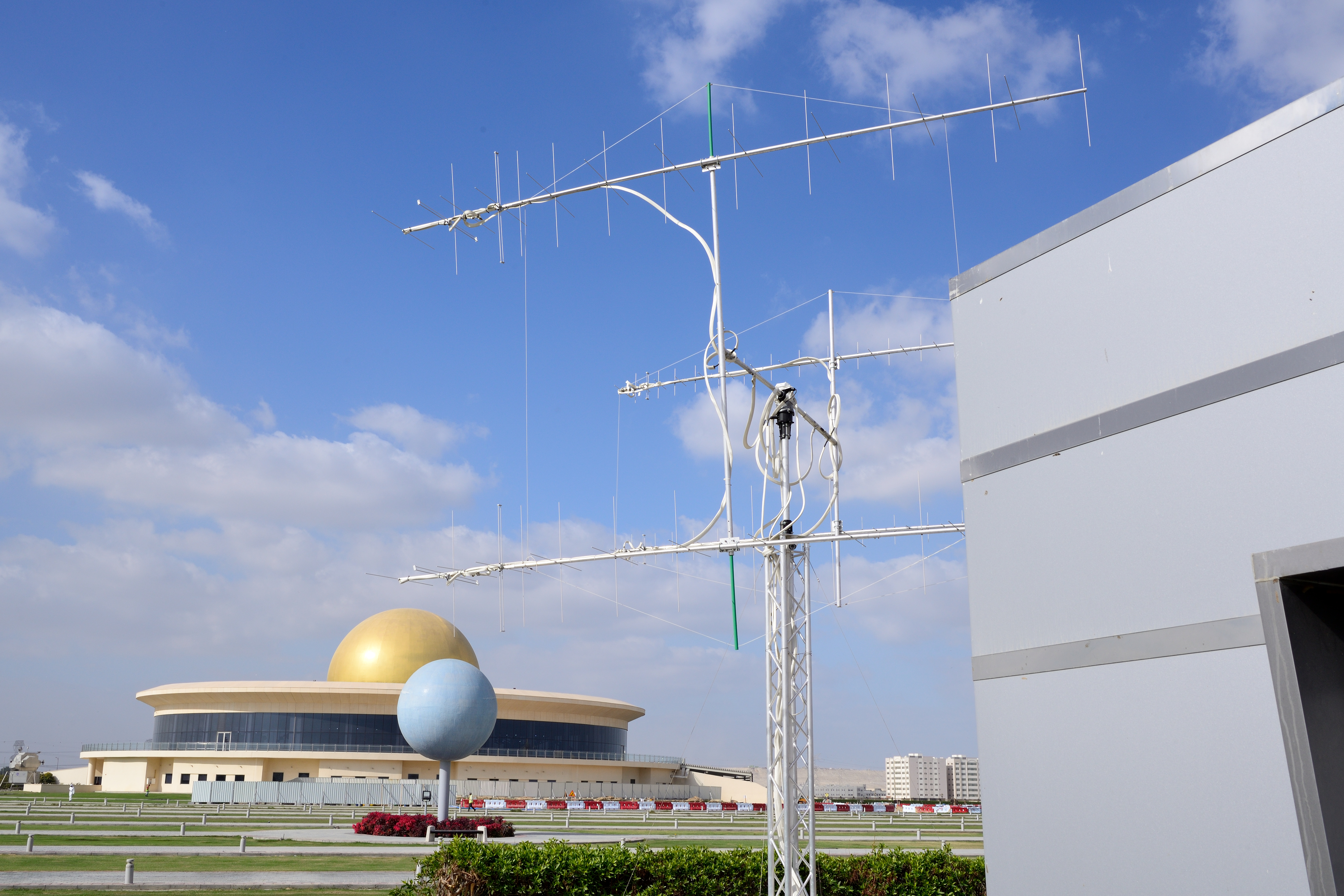
First Signal!
At 10:02 am on Tuesday, January 17, 2023, SAASST successfully received the first communication signal from Sharjah-Sat-1.
The signal consists of information about the state of the satellite and its readiness to perform its mission after it was successfully deployed from the main spacecraft. The team continues to track and receive telemetry and payload data from the CubeSat as it passes over the ground station in Sharjah.







